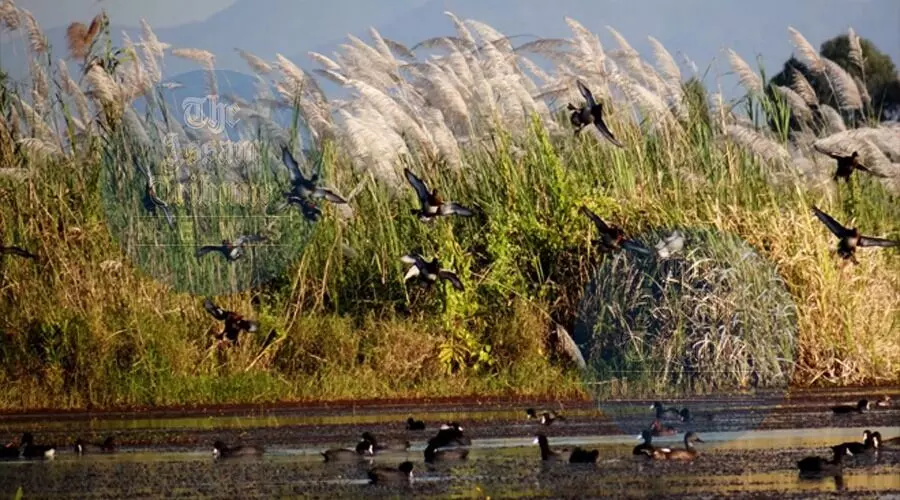20 waterfowl species found in Manipur’s Keibul Lamjao floating national park
The duck species includes 14 migratory and four resident species, and the two geese species are both migratory.

AT Photo: Researchers have recorded 18 species of ducks and two species of geese at the Keibul Lamjao National Park
Imphal, Nov 1: In an extended study spanning from 2020 to 2024, researchers have recorded 18 species of ducks and two species of geese belonging to the Anatidae family, at the Keibul Lamjao National Park, considered the only floating national park in the world.
Researchers RK Birjit Singh and Sh Bijen Meetei of Mangolnganbi College, Ningthoukhong, N Sony Meitei of Moirang College, and N Mohilal Meetei of Manipur University were involved in a joint study from January 19, 2020 to January 20, 2024 as part of the Asian Waterbird Census. The report was published in the Uttar Pradesh Journal of Zoology on October 28 this year.
The survey was carried out to identify major northern wintering and waterbird congregation sites in the park. Accordingly, five major congregation sites - Pabot Chingmang, Chingmei, Ngakrakom, Hameiban and Thangbarel Yangbi - were marked.
Keibul Lamjao, home to the highly endangered Manipur brow-antlered deer (Rucervus eldi eldi), locally known as sangai, Manipur's State animal, was declared a national park in 1977. Measuring about 40 square kilometres, the park is located on the southern part of Loktak, the largest freshwater lake of North East India.
During the survey which began with collection of preliminary data, identification of species, their global status, and impact of climate change on the hydrological regime, a total of 18 species of ducks and two species of geese belonging to eight genera of the Anatidae family have been recorded, according to the eight-page report in the Uttar Pradesh Journal of Zoology.
The lesser whistling duck (Dendrocygna javanica) was the most abundant and dominant species (9,504 individuals) in terms of population, followed by Gadwall Anas strepaera and Red-crested Pochard Netta rufina. The minimum value was observed in the greylag goose (Anser anser) with only a single individual, the study stated.
The duck species includes 14 migratory and four resident species, and the two geese species are both migratory.
Out of the four resident duck species, the lesser whistling duck (Dendrocygna javanica), cotton teal (Nettapus coromandelianus), and spot-billed duck (Anas poecilorhyncha) can be seen all the year round and have been confirmed to breed in the Keibul Lamjao National Park and Loktak.
“A critically endangered Baer's Pochard (Aythya fuligula) was recorded in the year 2023 at Pabot Chingmang site. Two globally near threatened Ferruginous Pochard (Aythya nyroca) and Falcated Duck (Anas falcata) have also been recorded,” the report added.
Pabot Chingmang contributed a higher percentage of the waterfowl in comparison to the rest of the congregation sites. It was also suggested to control the rapid proliferation of floating biomass and create open water areas as part of habitat development of waterbirds as the Keibul Lamjao National Park is located in the central Asian flyway of migratory birds.
